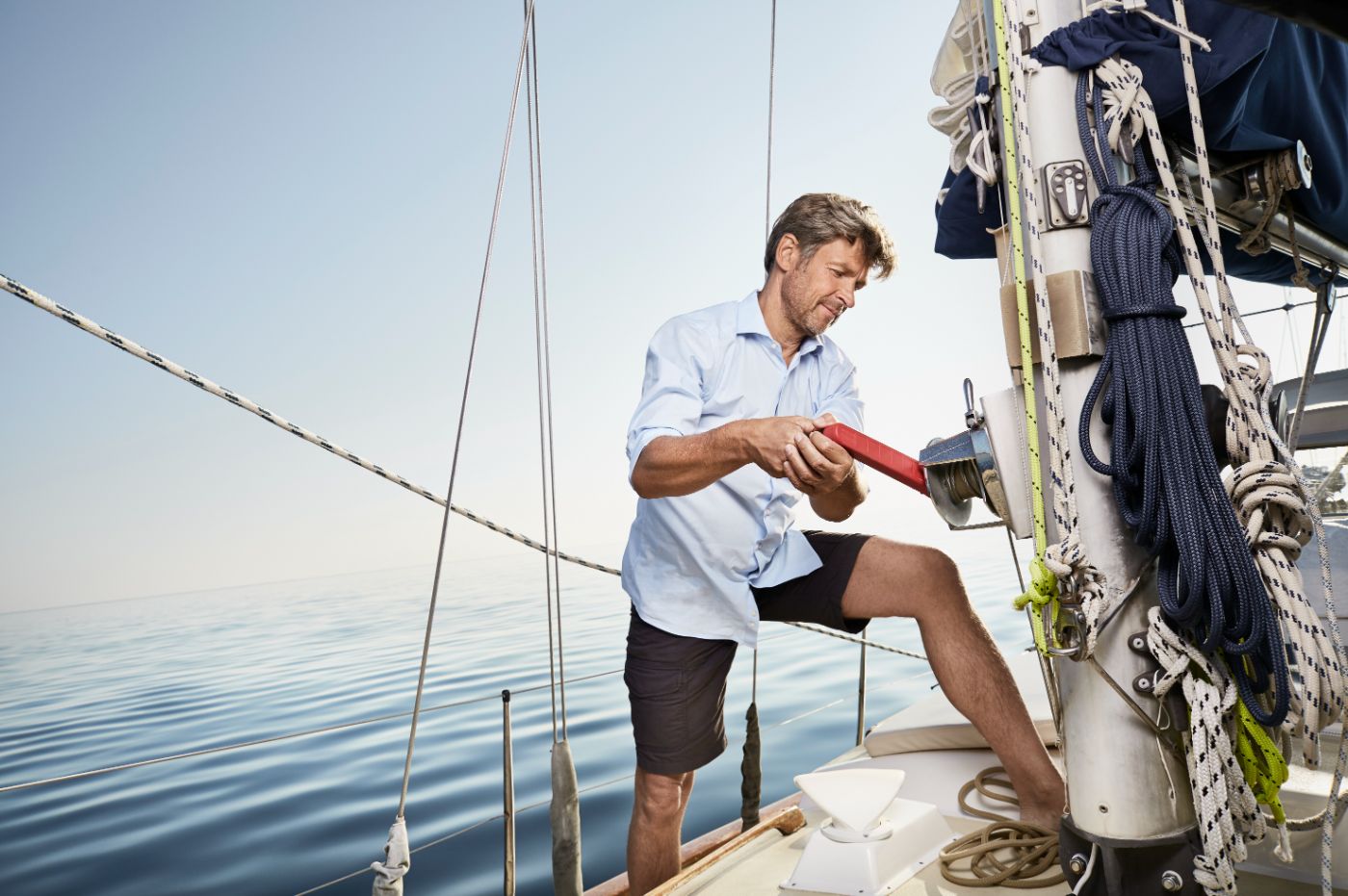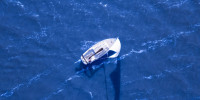Every Single-Handed Sailing Technique the Pros Use
From mastering the art of self-reliance to honing your navigation and sailing skills, the pros have a wealth of knowledge to share. In this article, you'll discover the essential techniques employed by seasoned single-handed sailors and learn how to apply them in various situations you may encounter while exploring the world by sea.
Solo sailing techniques the pros use include tacking and jibing, reefing, using autopilot, trimming your sails, anchoring your boat, mooring, navigating, man overboard recovery, dealing with capsizing, inspecting your boat, performing repairs, using safety equipment, and knowing how to handle emergencies.
Always be prepared to adapt to unexpected challenges that may arise with sailing solo. If you study and practice these proven techniques, you'll be better equipped to tackle any situation and revel in the unparalleled joy of conquering the open ocean on your own terms.
Summary
- Practice your sailing skills before setting off solo. Begin by sailing short distances close to shore, and gradually build up to longer trips and more challenging conditions.
- Make sure your boat is set up for single-handed sailing with self-tailing winches, a self-tacking jib, and an autopilot if possible.
- Plan your route ahead carefully. Choose a route that is familiar and easy to navigate, and be prepared for changing conditions.
- The key to handling emergencies when single-handed sailing is preparedness, focus, and maintaining a calm and friendly mindset.

On this page:
Single-Handed Sailing Techniques
First and foremost, you need to be confident in your sailing skills, have a solid understanding of your boat's handling characteristics, and make sure it is set up properly for single-handed sailing. Since you'll be managing the boat alone, practicing essential maneuvers like tacking, jibing, reefing, and anchoring until they become second nature is crucial. This will help you stay in control of the boat even in challenging conditions.
Safety should always be a top priority when single-handed sailing. Before setting sail, ensure that your boat is well-maintained and properly equipped with essential safety gear such as life jackets, flares, and a well-stocked first aid kit. Additionally, it's important to have a reliable communication device on board since you'll be on your own in case of an emergency.
Weather forecasting is another key aspect of single-handed sailing. By keeping a close eye on changing weather conditions, you can plan your route and make adjustments as needed to avoid potentially dangerous situations. Make sure to have access to up-to-date weather information, either through onboard electronics or a reliable weather app on your smartphone.
Finally, proper planning and organization are essential for a successful single-handed sailing trip. This includes creating a realistic itinerary, accounting for the time it will take to complete each leg of your journey, and ensuring that you have enough provisions on board. Additionally, establishing a regular routine while onboard can help you stay on top of boat maintenance and manage your energy levels effectively.

Tacking and jibing
While tacking, it's crucial to maintain a steady course and allow the boat to turn naturally while adjusting the sails. Try using a cross-sheeting technique to maintain better control over your sails. For jibing, always ensure you have enough space to execute the maneuver safely and try to keep the process smooth.
Tacking and jibing are maneuvers used to change the direction of the boat. When sailing solo, it's important to plan ahead and make sure the boat is set up properly for the maneuver. You may need to use a self-tacking jib or a boom brake to make the maneuver easier and safer.
There are mixed opinions about self-tacking jibs. Some sailors recommend them as a useful tool for solo sailing, as they allow the sailor to focus on other tasks during tacking maneuvers. Others feel that self-tacking jibs are not as efficient as traditional jibs and may not perform as well in certain conditions.
Some sailors also recommend using a self-tacking jib in combination with a boom brake, as this can help to maintain control of the boat during maneuvers and changing conditions.
Overall, the recommendations regarding self-tacking jibs are to consider the specific needs of your boat and sailing style, and to test out different options before making a decision.
Reefing
Reefing becomes an essential skill, particularly in strong winds. Familiarize yourself with your boat's specific reefing system, whether it's single-line jiffy reefing or slab reefing. Before setting out, practice lowering the mainsail to various reef points. This enables you to be prepared for sudden changes in wind speed, ensuring a safer solo sailing experience.
Reefing is the process of reducing the amount of sail area exposed to the wind. When sailing solo, it's important to reef early and often to maintain control of the boat in changing conditions.
Use autopilot
Autopilot can be a valuable tool for solo sailors, allowing you to maintain course and speed while you attend to other tasks. However, it's important to keep a close eye on the autopilot and be prepared to take over if necessary.
An autopilot system can be your best friend while single-handed sailing. It allows you to maintain a steady course while carrying out other tasks, like trimming sails or preparing food. Familiarize yourself with your boat's autopilot system and understand its limitations, such as in heavy seas or strong winds. When relying on autopilot, always remember to keep a lookout for potential hazards and maintain situational awareness.
Use sail trim to your advantage
Proper sail trim is essential for efficient sailing and can help you maintain control of the boat in changing conditions. When sailing solo, it's important to make small adjustments frequently to keep the boat balanced.
Trimming your sails single-handedly requires a bit more effort and attention than when sailing with a crew. You'll need to manage your time efficiently and use appropriate sail management systems like lazyjacks, Dutchman, or stack packs to keep the sails under control. Develop a routine for adjusting your sails, and always ensure you keep an eye on the wind shifts and boat performance to maximize efficiency and safety.
Additional Single-Handed Sailing Skills

In this section, we will cover three additional techniques: anchoring alone, mooring with ease, and navigation skills.
Anchoring alone
Anchoring is an essential skill for any sailor, but it can be particularly challenging when sailing solo. You'll need to choose the right anchor and scope, and be prepared to adjust your position as the wind and current change.
Anchoring your boat on your own can be challenging, but with practice, it becomes straightforward. Follow these steps for safe and successful anchoring:
- Choose a suitable spot: Find an area with good holding ground, protection from wind and waves, and enough space from other boats.
- Prepare your anchor and rode: Ensure you have the right anchor for your boat and the seabed conditions. Attach the rode to the anchor and ensure it's untangled.
- Approach slowly: Approach your chosen spot at a slow speed, taking note of the wind and current conditions.
- Drop the anchor: As you reach your anchoring spot, slowly lower the anchor to the seabed.
- Reverse and set: Slowly reverse your boat, allowing the anchor to dig into the seabed. Maintain tension on the rode to ensure secure holding.
- Monitor and adjust: Regularly check your boat's position to ensure the anchor is holding well. Adjust if necessary.
Mooring with ease
Mooring a boat single-handed can be challenging, but with the right preparation and techniques, it can be done safely. You may need to use a spring line or a boat hook to help position the boat in the right spot.
Mooring can be just as demanding when you're single-handing, but these tips will help simplify the process:
- Plan your approach by considering factors such as wind direction, current, and other boats nearby.
- Have your docking lines and fenders ready before approaching the mooring area.
- Approach slowly to maintain better control of your boat and reduce the risk of collisions.
- Use a boat hook to help you reach the mooring lines or buoy.
- Secure your boat by attaching the bow line first, followed by the stern and spring lines.
Navigation skills
Solid navigation skills are crucial when sailing alone. Here are some essential tips for honing your skills:
- Study charts to familiarize yourself with sailing routes, hazards, and navigational aids.
- Use electronics, such as GPS devices, to provide accurate location and tracking information.
- Understand navigational aids, like buoys and beacons, to guide you safely through the waters.
- Develop good weather sense to anticipate changes in conditions and adjust your plans accordingly.
Emergency and Recovery Strategies
Practice man overboard recovery
You'll need to practice different recovery techniques and make sure you have the necessary equipment on board.
When sailing single-handed, it's crucial to be prepared for a man overboard situation. If you find yourself overboard, you'll have to act quickly and efficiently to ensure your safety. Start by getting your lifejacket on and establishing a connection between yourself and the boat using a lifeline.
Next, maneuver the boat toward you. Be cautious of your proximity to the boat's hull and lines. When close enough, use a boat hook or other reaching device to grab hold of a suitable part of the boat. It's helpful to have a ladder, rope, or other devices to assist in getting back on board.
Stay calm and focused throughout the process. Make sure to keep an eye on wind, current, and wave conditions to help adjust your recovery strategy accordingly.
Dealing with capsizing
Start by establishing a plan for dealing with capsizing before you even leave the dock. Know the whereabouts of your safety gear, such as personal flotation devices and signal equipment.
If your boat capsizes, your first priority is ensuring you safely exit the boat. Keep your head above water and avoid getting tangled in ropes or other equipment. If possible, try to stay near the boat to maximize your chances of being spotted by rescuers.
To increase your chances of recovery, it's essential to have a deep understanding of weather patterns and forecasts. Monitor weather conditions continuously and be prepared to make adjustments to your sailing plans.
In some cases, you might be able to right the boat yourself, especially if you're sailing a smaller vessel. Practice this maneuver in controlled conditions before attempting it in a real capsize situation. Be prepared to act swiftly and decisively in these circumstances.
Maintenance Tips for Single-Handed Sailors
Here are some essential maintenance tips to help you tackle any challenges that come your way.
Inspect your boat
Regularly inspect your boat and equipment for signs of wear and tear, and carry spare parts and tools on board to make repairs as needed. You'll need to check your rigging, sails, and other equipment regularly to ensure everything is in good working order.
Regularly inspecting your boat is vital to catching any issues before they become significant problems. Make it a habit to:
- Check your rigging for signs of wear, corrosion, or damage.
- Examine your sails for any tears, loose stitching, or broken hardware.
- Look over your hull for cracks or signs of water intrusion.
- Keep an eye on your electronics and wiring, ensuring all connections are secure and free of corrosion.
- Inspect your engine, checking for any leaks, worn belts, or clogged filters.
Essential repair skills
As a solo sailor, you'll need to be prepared for any situation that may arise, and being able to perform essential repairs is critical. Equip yourself with the following skills:
- Sail repair: Familiarize yourself with basic stitching techniques and patching sails. Carry a sail repair kit on board for emergency use.
- Rigging repair: Know how to replace a broken shackle or re-tension a loose shroud. Keep spare rigging parts and a set of tools handy.
- Hull repair: Learn how to patch small cracks or holes in your hull with epoxy and fiberglass cloth. Carry an emergency hull repair kit on your boat.
- Electrical repair: Be comfortable troubleshooting and repairing simple electrical issues, such as blown fuses or faulty connections. Keep essential electrical repair tools and spare parts on board.
- Engine repair: Understand the basics of your engine and how to diagnose common issues like fuel or cooling problems. Keep an engine repair manual on hand, as well as a well-stocked toolkit.

Safety Measures When Solo Sailing
Proper use of safety equipment
Always wear a life jacket and ensure it fits snugly and comfortably. Attach a safety harness connecting you to the boat, especially when moving around the deck in rough weather or at night. Make sure your boat is equipped with essential safety gear, such as flares, a VHF radio, and a personal locator beacon.
Become familiar with the operation and maintenance of the safety equipment on board, and conduct regular checks to ensure everything is in good working condition.
Use lights and signals. Make sure your boat is properly equipped with navigation lights and that they are visible from all angles. Use sound signals as necessary to indicate your intentions.
Use technology such as radar, AIS, and other technology to enhance your situational awareness and help you avoid collisions.
Emergency procedures
Knowing how to handle emergencies is vital for every sailor, especially when you're single-handed. Develop a set of emergency procedures for various situations and practice them regularly. Some examples include:
- Man overboard (MOB): Familiarize yourself with MOB recovery methods and have a throwable floatation device or a rescue sling on hand.
- Fire: Keep fire extinguishers accessible and in good condition. Know how to use them and regularly check their expiration dates. Be ready to cut off fuel or electrical power in case of a fire.
- Dismasting: Have a plan to clear the deck of debris and reestablish control of the boat should your mast break.
- Medical emergencies: Keep a well-stocked medical kit on board and learn basic first aid, including how to treat cuts, burns, and seasickness.
Additional tips and advice for sailing solo
Use a checklist: Create a pre-sail checklist to make sure you have everything you need on board, and to ensure that your boat is properly prepared for the trip.
Stay alert: Keep a close eye on the weather, other boats, and your own fatigue levels, and be prepared to adjust your plans as needed. Maintain a constant lookout for other boats, and be prepared to take evasive action if necessary.
Take breaks: Schedule regular breaks to rest and recharge, and to check your boat and equipment for signs of wear and tear.
Minimize distractions: Minimize distractions on board and stay focused on the task of sailing safely.
Stay organized: Keep your boat and equipment organized, and have a system in place for keeping track of everything on board.
Did you find the answer to your specific question?
👍 2 👎 0




Leave a comment